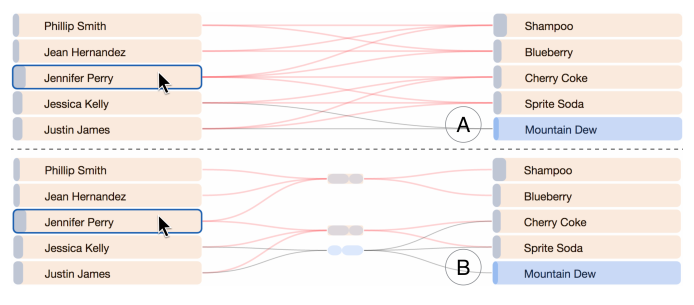
Maoyuan Sun, assistant professor of computer and information science at UMass-Dartmouth, recently published an article, titled, “The Effect of Edge Bundling and Seriation on Sensemaking of Biclusters in Bipartite Graphs,” in the journal IEEE Transactions on Visualization and Computer Graphics (TVCG). The co-authors are Jian Zhao, Hao Wu, Dr. Luther, Chris North, and Naren Ramakrishnan. The article’s abstract is as follows:
Exploring coordinated relationships (e.g., shared relationships between two sets of entities) is an important analytics task in a variety of real-world applications, such as discovering similarly behaved genes in bioinformatics, detecting malware collusions in cyber security, and identifying products bundles in marketing analysis. Coordinated relationships can be formalized as biclusters. In order to support visual exploration of biclusters, bipartite graphs based visualizations have been proposed, and edge bundling is used to show biclusters. However, it suffers from edge crossings due to possible overlaps of biclusters, and lacks in-depth understanding of its impact on user exploring biclusters in bipartite graphs. To address these, we propose a novel bicluster-based seriation technique that can reduce edge crossings in bipartite graphs drawing and conducted a user experiment to study the effect of edge bundling and this proposed technique on visualizing biclusters in bipartite graphs. We found that they both had impact on reducing entity visits for users exploring biclusters, and edge bundles helped them find more justified answers. Moreover, we identified four key trade-offs that inform the design of future bicluster visualizations. The study results suggest that edge bundling is critical for exploring biclusters in bipartite graphs, which helps to reduce low-level perceptual problems and support high-level inferences.